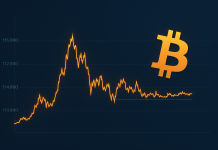[ad_1]
Benedict Evans, a general partner at Andreessen Horowitz (A16Z), one of the most successful venture capital firms in the world, has said that crypto is quite similar to the internet in 1993.
As with any other emerging technology or market, the cryptocurrency space has seen a large number of failed projects and scams over the past several years.
However, according to Evans, if investors focus on the failed projects and fraudulent operations in the exponentially growing cryptocurrency sector, it would be like dismissing the internet in 1999 based on the lack of progress of Usenet, Cuecat, and Boo.com.
“Crypto today has a lot in common with both the internet in 1993 and the internet in 1999. Huge potential with few of the use cases invented yet, combined with froth, scams and delusion. This makes it easier to dismiss. But dismissing crypto as a useless scam is much like looking at Usenet, Cuecat and Boo.com and dismissing the internet. It mistakes applications for the enabling layer.”
Emerging Technology is Disguised as Inferior Technology
Crypto today has a lot in common with both the internet in 1993 and the internet in 1999. Huge potential with few of the use cases invented yet, combined with froth, scams and delusion. This makes it easier to dismiss (“useless AND a scam!”).
— Benedict Evans (@benedictevans) October 29, 2018
Previously, Ben Horowitz, a legendary venture capital investor and the co-founder of A16Z, emphasized that one deceptive aspect about emerging technologies like crypto and mobile phones is that in the beginning, emerging technologies seem significantly inferior to existing technologies.
Hence, due to the discrepancy in efficiency and practicality between emerging technologies and existing solutions, it is easier to dismiss newly created technologies on the premise that they are dominated scams.
In a new market, investors often try to rush in to invest in every new project to catch the bubble. Several cryptocurrency projects reached multi-billion dollar valuations in late 2017 as the valuation of the cryptocurrency market reached $800 billion.
But, Evans explained that as the market matures, more mainstream use cases will emerge, and technologies employed by projects in the sector will drastically improve.
“Looking at crypto and only seeing the scams is like looking at the internet in 1999 and only seeing the bubble. Looking at crypto and seeing no use cases is like looking at the internet in 1993, when the web was 3% of traffic,” said Evans.

In regards to the popular argument against cryptocurrencies that they have no clear use case, Evans stated that in 1993, there was not a sufficient reason for a mainstream use to utilize the internet.
The difference between crypto in 2018 and the internet in 1993 is that cryptocurrencies already have several use cases that surpass the efficiency of legacy systems.
For instance, as a cross-border payment method, it is substantially cheaper to send a Bitcoin payment than rely on banking systems, as seen in the settlement of $194 million worth of Bitcoin with a $0.1 fee.
“OK: no mainstream use cases. There was no reason for any normal person to use the internet in 1993, which was why no normal person did use it, and the thing that changed that, the web, barely existed. We had a capability.”
Crypto is Still in its Infancy
For investors, venture capital firms, and hedge funds, it is easier to dismiss crypto than to understand and recognize its potential in the long-term to operate as a consensus currency and a global supercomputer.
But, if crypto does achieve mainstream adoption, investors that did not consider the potential of the technology will be left out, as seen in the case of the internet in 1999.
Featured Image from Shutterstock
Follow us on Telegram or subscribe to our newsletter here.
Advertisement
http://platform.twitter.com/widgets.js
[ad_2]
Source link




